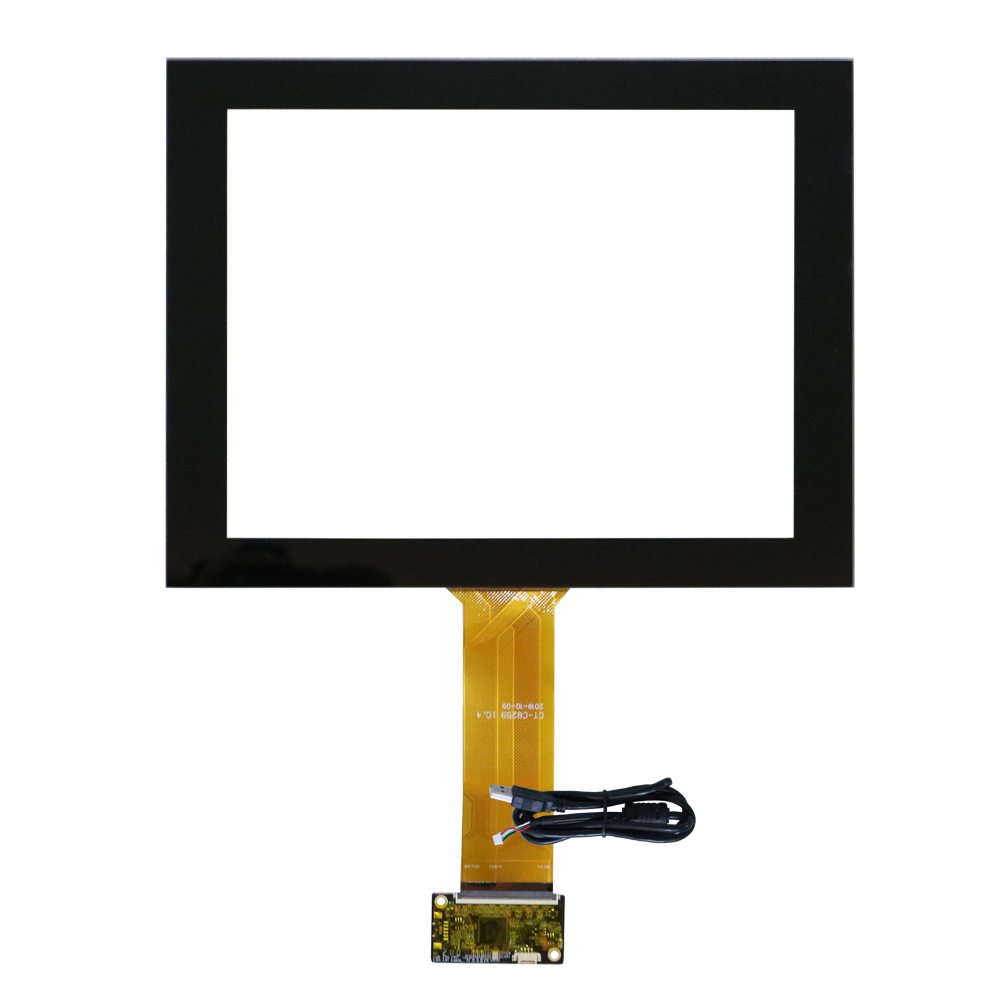News
What Is Projected Capacitive Touchscreen CTP ?
The projected capacitive touchscreen CTP has a multi-finger touch function. Both capacitive touch screens have the advantages of high light transmittance, fast response speed, and long life. The disadvantage is that the capacitance value will change with the change of temperature and humidity. This leads to poor working stability and often drifts.
Mutual Projected capacitive touch screen CTP
Projected capacitive touchscreen CTP can be divided into two types: self-capacitive screens and mutual-capacitive screens. Take the more common mutual capacitance screen as an example, which is composed of driving electrodes and receiving electrodes. The driving electrode sends out a low-voltage high-frequency signal and projects it to the receiving electrode to form a stable current. When the human body touches the capacitive screen, the human body is grounded. The finger and the capacitive screen form an equivalent capacitance. The high-frequency signal can flow into the ground through this equivalent capacitance. In this way, the amount of charge received by the receiving end is reduced. When the finger is closer to the emitter, the charge decreases more obviously. Finally, the touched point is determined according to the current intensity received by the receiving end.
ITO is used to make horizontal and vertical electrode arrays on the glass surface. These horizontal and vertical electrodes respectively form a capacitor with the ground. This capacitor is commonly referred to as self-capacitance. That is, the capacitance of the electrode to the ground. When the finger touches the capacitive screen. The capacitance of the finger will be superimposed on the capacitance of the screen, increasing the capacitance of the screen.
Self-capacitive Touch Screen
In the touch detection, the self-capacitance screen detects the horizontal and vertical electrode arrays in sequence, according to the change of capacitance before and after the touch. Determine the horizontal coordinate and the vertical coordinate respectively, and then combine them into the touch coordinate of the plane. The self-capacitance scanning method is equivalent to projecting the touch points on the touch screen to the X-axis and Y-axis directions respectively. Then the coordinates are calculated in the X-axis and Y-axis directions respectively, and finally combined into the coordinates of the touch point.
If it is a single-point touch, the projections in the X-axis and Y-axis directions are unique. The combined coordinates are also unique. If there are two touches on the touch screen. And the two points are not in the same X direction or the same Y direction. Then there are two projections in the X and Y directions respectively. Then 4 coordinates are combined. Obviously, only two coordinates are real. The other two are commonly known as "ghost spots". Therefore, the self-capacitive screen cannot achieve true multi-touch.
The Working Principle Of Mutual Capacitive touchscreen CTP
The mutual capacitance screen also uses ITO to make horizontal electrodes and vertical electrodes on the glass surface. The difference between it and the self-capacitive screen is. A capacitance will be formed where the two sets of electrodes intersect. That is, these two groups of electrodes respectively constitute the two poles of the capacitor. When the finger touches the capacitive screen, it affects the coupling between the two electrodes near the touch point. Thereby changing the capacitance between the two electrodes. When detecting the mutual capacitance, the horizontal electrodes send out excitation signals in turn.
All electrodes in the longitudinal direction receive signals at the same time. In this way, the capacitance value of the intersection of all the horizontal and vertical electrodes can be obtained. That is, the capacitance of the two-dimensional plane of the entire touch screen. According to the two-dimensional capacitance change data of the touch screen, the coordinates of each touch point can be calculated. Therefore, even if there are multiple touch points on the screen. It can also calculate the true coordinates of each touch point.
Advantages of Mutual Capacitive touchscreen CTP
The advantage of the mutual projected capacitive touchscreen CTP is that there is less wiring. And can identify and distinguish the differences between multiple contacts at the same time. The self-capacitance screen can also sense multiple contacts. However, because the signal itself is fuzzy, it cannot be distinguished. In addition, the sensing scheme of the mutual capacitance screen has the advantages of fast speed and low power consumption. Because it can measure all nodes on a drive line at the same time. Therefore, the number of acquisition cycles can be reduced by 50%. This two-electrode structure has the function of self-shielding external noise. The signal stability can be improved at a certain power level.
Dingtouch PCAP Touch Screen Manufacturer
In conclusion, Dingtouch as a professional touch screen manufacturer with more than 10 years touch screen experience.We have manycapacitive touch screen.Such as5 inch touch screen,7 inch touch screen,10.1inch touch screen,15 inch touch screen,15.6 inch touch screen,17 inch touch screen,18.5 inch touch screen,19 inch touch screen,21.5 inch touch screen,32 inch touch screen, However, we also welcome to customize your own touch screen . Contact our team today to learn wha tcapacitive touch screenare best for our retail business needs. Contact us NOW!sales@szdingtouch.com
CATEGORIES
CONTACT US
Contact: Dingtouch
Phone: +8615815536116
Tel: +8615815536116
Email: sales@szdingtouch.com
Add: Building A, Bailu Plaza, No. 48, Gonghe Industrial Road, Gongle Community, Xixiang Street, Baoan District, Shenzhen,China. 518126

 Dingtouch
Dingtouch